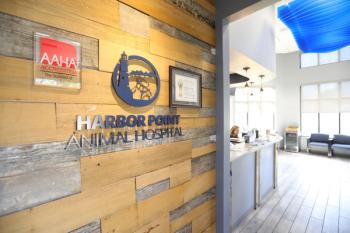
FDA taps veterinarians to oversee antimicrobial use in food animals
Veterinary Feed Directive final rule requires veterinarian-client-patient relationship.
Veterinary Feed Directive final rule requires veterinarian-client-patient relationship.
Getty ImagesVeterinarians were placed front and center in the U.S. Food and Drug Administration (FDA) strategy to promote the judicious use of antimicrobials in food-producing animals. The
“Antibiotic resistance is a threat that the veterinary profession takes very seriously, and that's why the nation's veterinarians have been, and remain, engaged with the FDA and food producers to ensure that livestock are healthy and that our food supply stays safe by overseeing the use of antibiotics to ensure appropriate use,” says American Veterinary Medical Association (AVMA) CEO Ron DeHaven, DVM, MBA, in an association release.
The AVMA has worked closely with the FDA in the development of the VFD as well as the guidance documents the agency produced to establish changes in antimicrobial use. The VFD final rule outlines how medically important antibiotics given to food animals are to be used and distributed to producers. The VFD requires veterinary approval and an established veterinarian-client-patient-relationship (VCPR) prior to use. A provision mandates that state law will dictate VCPR requirements regarding antimicrobial use; otherwise the federally defined VCPR is applied.
DeHaven praised the adoption of this provision, saying it provides for both flexibility and consistency in how veterinarians and food producers comply with the FDA's guidance. “This is really a milestone in the antimicrobial resistance strategy,” he says. “Veterinary oversight is critical to ensuring appropriate judicious use, and this provision provides clarity to those who will be responsible for it.
“When state VCPRs complement federal regulations, everyone wins,” DeHaven continues. “It strengthens and supports the goals of the program to ensure healthy animals, a safe food supply and the reduction of antibiotic resistance. … Veterinarians want to help ensure that antibiotics remain an important part of preventing and treating diseases in both humans and animals.”
Next: Continued efforts to ensure 'judicious' use of antimicrobial drugs
Other efforts to ensure 'judicious' use of antimicrobial drugs
A White House forum June 2 followed the announcement of the VFD final rule on antibiotic resistance. DeHaven represented the AVMA at the forum with more than 150 other health leaders, sharing several commitments the AVMA plans to make to meet the federal government's recommendations on combating antibiotic resistance. According to DeHaven, the AVMA will:
> Initiate an educational outreach campaign on the responsible therapeutic use of antimicrobials in animals, including greater veterinary oversight to assist in compliance with FDA guidance and regulations.
> Advocate for enhanced funding and capacity for surveillance and response in diagnostic animal health laboratories and the National Antimicrobial Resistance Monitoring System, as well as studies to assess antimicrobial resistance in food animals.
> Advocate for research and programs that address infectious and zoonotic diseases, food security and safety, and environmental issues relating to human and animal well-being.
> Promote the understanding of antimicrobial resistance and the further development of alternatives to or improved uses of antimicrobials in food animals.
> Develop risk assessments to evaluate effectiveness of risk-mitigation strategies.
> Engage in national and international scientific discussions on antimicrobial use and resistance.
Elanco Animal Health President Jeff Simmons also participated in the White House forum panel discussion and shared Elanco's eight-step antibiotic stewardship plan. Elanco says in a release that it will host an animal health accountability summit to provide a progress report on these commitments next year. Here's Elanco's plan:
1. Work with food producers and retailers to provide training and encourage policies that reduce use of shared-class antibiotics (those used in both people and animals) and increase veterinary oversight.
2. Cease marketing growth-promotion uses for shared-class antibiotics and end growth-promotion use of these antibiotics globally by the end of 2016.
3. Help customers eliminate continuous use of shared-class antibiotics for therapy purposes by providing an alternative.
4. Eliminate over-the-counter sales of shared-class antibiotics globally-including injectable products-where veterinary oversight exists.
5. Eliminate concurrent use of shared-class antibiotics to treat the same disease.
6. Support veterinary oversight and responsible use, including helping build infrastructure globally.
7. Develop new animal-only antibiotics.
8. Create alternatives by committing to invest two-thirds of Elanco's food animal research budget to quickly evaluate 25 candidates and deliver 10 viable non-antibiotic development projects that address diseases where there are few, or no, alternatives to shared-class antibiotics. (Respiratory disease and enteric disease in cattle, swine and poultry and mastitis in cattle.)
In addition to efforts in the private sector, FDA has also proposed revisions to its annual reporting requirements for drug sponsors to improve its understanding of how antimicrobials are sold or distributed for use in major food-producing species. It plans to gather this additional data by collecting estimates of sales by major food-producing species.
Newsletter
From exam room tips to practice management insights, get trusted veterinary news delivered straight to your inbox—subscribe to dvm360.






